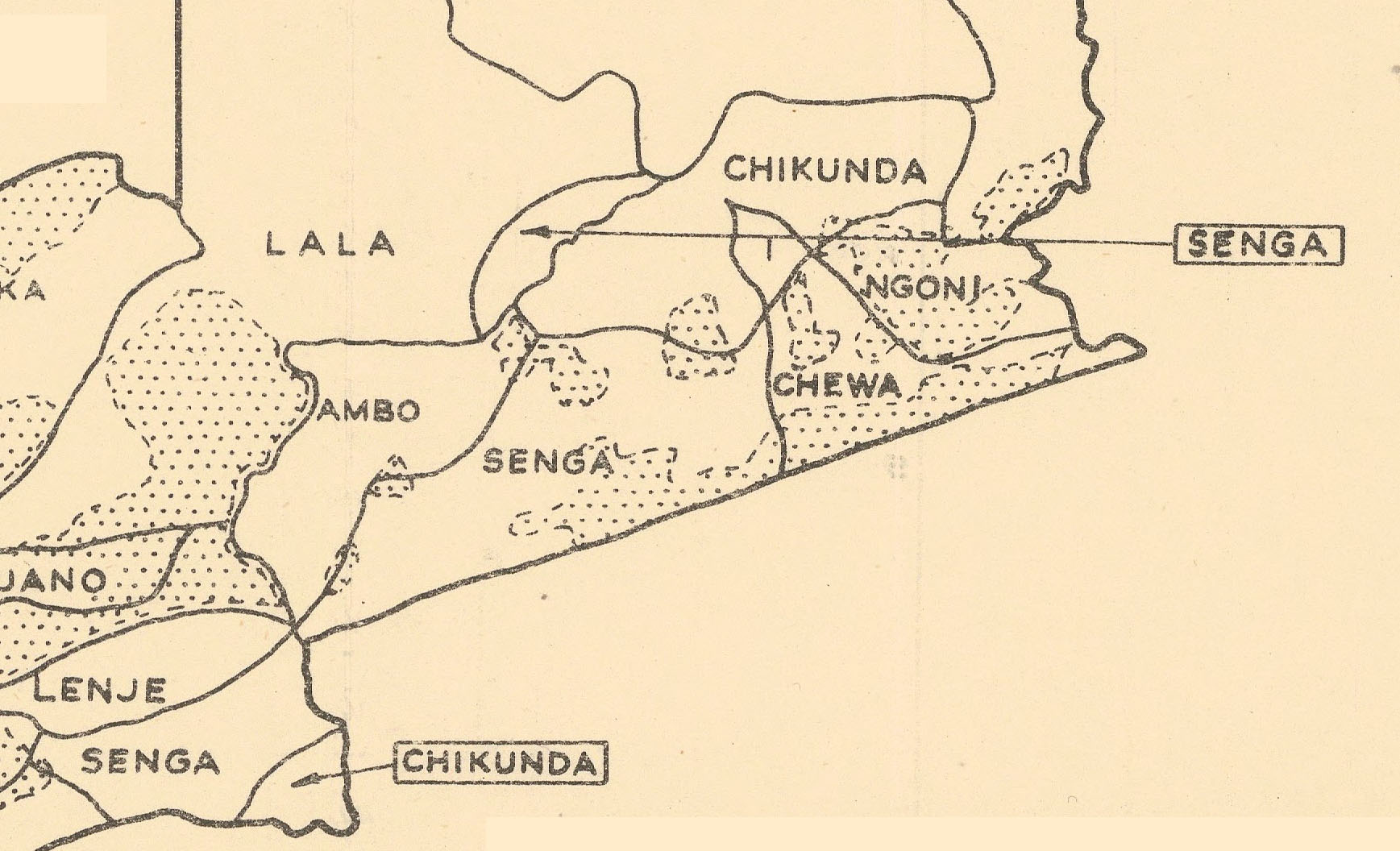The Chikunda (Achikunda) have their origins in Mozambique. The Portuguese had vast estates, known as Prazos, and they used slaves and ex-slaves as security guards and hunters. They trained the men in military tactics and gave them guns. These men became expert elephant hunters and were known as the Chikunda. Although these men were from different ethnic groups from the interior of Africa, they developed their own language and culture.
At the beginning of the 1800s the Portuguese estates began to crumble and many of the workers were sold as slaves. Seeing the writing on the wall, groups of Chikunda fled up the Zambezi River.
From: Making The Chikunda, By Allen Isaacman and Derek Peterson
Their mythology and dances similarly celebrated Chikunda men’s valor. Soldiers’ return from a successful military operation or hunting expedition was the occasion for great celebration. A British traveller passing through the Tete region in the middle of the nineteenth century observed one such performance.
Here forms a double ring of fifty or sixty men, in each hand a bullock’s horn, clashing them in unison to the stroke of one supple and lithe-limbed native, who springing into the center, leaps nearly his own height from the ground…. Not far from them, single dancers are weighing against each other, brandishing their weapons, muskets, assegai, battle axes, or bow and arrows, and achieving pirouettes that would open the eyes of some of our ballet dances.
One of the groups under Chikwasha made landfall around the Luangwa confluence. Here, he and his men became very useful to a chief of the Nsenga as protection and the provider of food and elephant tusks.
Another group under warlord, Kanyemba, traded slaves up and down the Zambezi River. Kanyemba was the son of a Tande father and a mixed-race Goan mother who had brought under his control a group of Chikunda. They had several camps along the river. The name Kanyemba is given to an island at the confluence of the Kafue and Zambezi Rivers; the island was one of Kanyemba’s camps. The town on the south of the Zambezi River, opposite Luangwa, is called Kanyemba. Kanyemba’s reign lasted for about 30 years from around 1860. At his death in the 1890s, Kanyemba became a spirit of the Chikunda people, known as Mhondoro. From Arming Slaves: After his death, a young boy from Chipoto named Alimação manifested Kanyemba’s spirit. The young boy remained Kanyemba’s medium for many years, until he was “an elderly man who used a walking stick.” After Alimação passed away, Kanyemba’s spirit found refuge in a lion and, some time thereafter, entered the body of a woman named Joaquina. After she was recognized as Kanyemba’s earthly medium, she settled in his village at Bawa and lived there at least until 1997.

This map is part of one drawn by Suzanne Miers in her book: The End of Slavery in Africa. The black splodge shows the range of Kanyemba’s activities.
After the Scramble for Africa, both the British and Portuguese authorities launched a campaign to end the slave trade. The Chikunda were defeated but allowed to settle in villages.

